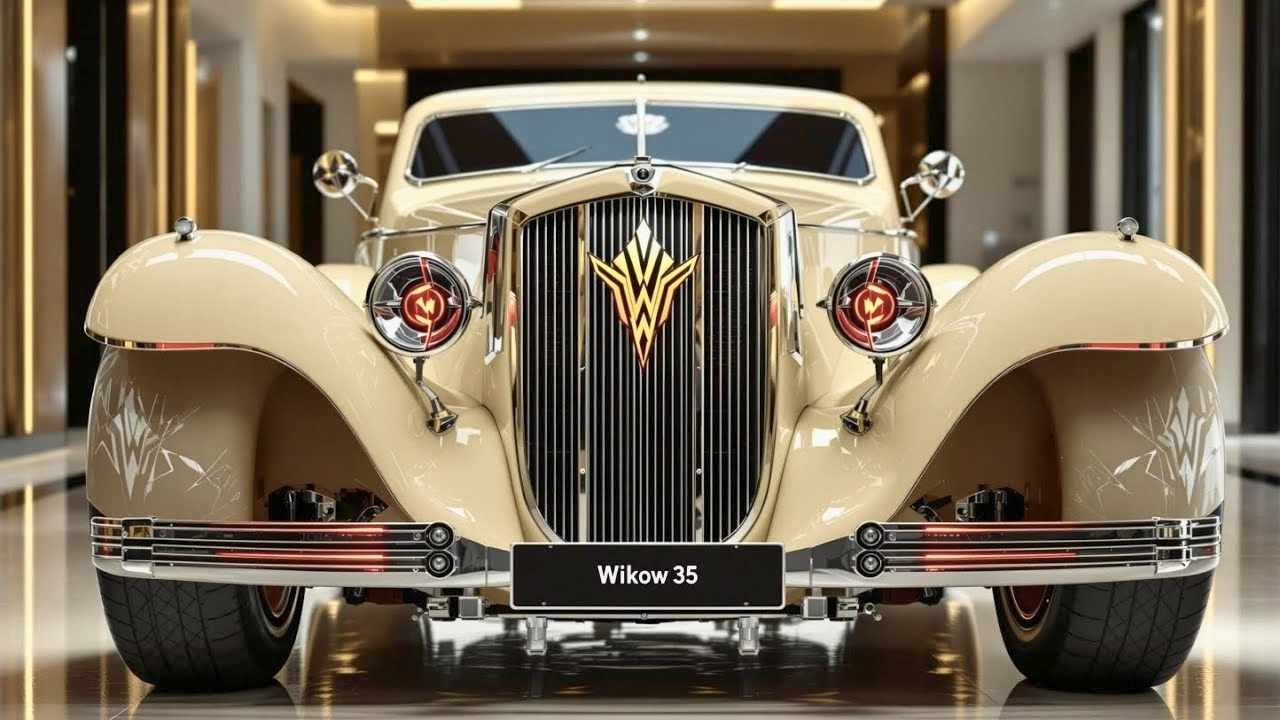The Wikov 35 Kapka is a symbol of Czech automotive ingenuity, renowned for its distinctive teardrop design and engineering excellence. Originally introduced in the early 1930s, this car became a unique representation of pre-war innovation, blending aerodynamic styling with practical mechanics. The 2026 revival or celebration of the Wikov 35 Kapka has brought renewed attention from collectors and vintage car enthusiasts alike. Its rarity makes it a sought-after vehicle in the classic car market, as only a limited number were ever produced. The Kapka’s iconic curved body, coupled with a focus on durability and functionality, makes it more than just a car it is a piece of automotive history that reflects the era’s creativity and technical progress. Collectors appreciate the combination of timeless design and mechanical simplicity, which allows the car to maintain its charm even in modern times.
When did the original Wikov 35 Kapka debut and how did it gain recognition
The original Wikov 35 Kapka was launched in 1931 by the Czech automaker Wikov, which was known for experimenting with aerodynamic forms and efficient engineering. At a time when most cars featured boxy and traditional designs, the Kapka stood out with its rounded, teardrop shape that reduced air resistance and enhanced visual appeal. Its lightweight construction, modest engine, and focus on practicality made it an attractive option for urban and suburban drivers. The car quickly gained recognition for its unusual styling and reliable performance. Over the decades, surviving examples became rare collectibles due to limited production numbers and the challenges of maintaining a vintage vehicle. The 2026 attention to the Wikov 35 Kapka highlights its lasting influence, showing how a design born almost a century ago can still capture the imagination of modern collectors.
How does the design of the 2026 Wikov 35 Kapka reflect its classic heritage
The design of the 2026 Wikov 35 Kapka remains true to the teardrop aesthetic that made the original model so iconic. Its rounded front, sloping roofline, and compact proportions create a streamlined silhouette that is both elegant and functional. While modern reproductions or restored models may incorporate updated materials for safety and longevity, the overall visual identity preserves the spirit of the original 1931 car. The interior typically features minimalist controls, seating for four, and a focus on driver engagement rather than luxury. Exterior details, including chrome accents, period-correct lighting, and thin-spoke wheels, add to its nostalgic appeal. This balance between authenticity and careful modernization allows enthusiasts to experience the charm of a pre-war classic while benefiting from subtle improvements in reliability and performance. The 2026 models or commemorations also highlight the car’s aerodynamic design, which was ahead of its time and influenced future automotive styling trends.
What makes the Wikov 35 Kapka a collector’s favorite
Collectors are drawn to cars that combine rarity, history, and distinctive design, and the Wikov 35 Kapka embodies all three. Its limited production ensures that surviving examples are rare, enhancing their value over time. The historical significance of the car as a Czech innovation adds a unique cultural dimension that appeals to international enthusiasts. Additionally, the teardrop design sets it apart from other vintage cars, offering a visual identity that is instantly recognizable. Owning a Wikov 35 Kapka is not just about possession; it is about preserving a piece of automotive history. Proper restoration and maintenance can further increase its value, making it a long-term investment for collectors. The combination of rarity, historical importance, and aesthetic appeal makes the 2026 celebration of the Wikov 35 Kapka particularly exciting for vintage car lovers.
How does the mechanical engineering of the 2026 Wikov 35 Kapka honor the original
While much of the appeal of the Wikov 35 Kapka lies in its design, its engineering also played a critical role in its historical importance. The original car featured a compact, efficient engine and lightweight chassis that allowed nimble handling and reliable performance for its time. Modern commemorative models or restored vehicles may incorporate updated mechanical components to improve safety and drivability without compromising authenticity. For instance, original-style suspensions, brakes, and drivetrain layouts may be retained or subtly upgraded with contemporary materials. This careful engineering ensures that the driving experience remains true to the original, allowing collectors to enjoy the car as it was meant to be driven while benefiting from modern reliability standards. The combination of historical accuracy and thoughtful modernization highlights the ingenuity behind the original 35 Kapka design.
When might the 2026 Wikov 35 Kapka become a prominent symbol in classic car events
Classic car events and exhibitions increasingly celebrate vehicles that represent unique eras of automotive history, and the Wikov 35 Kapka fits perfectly into this niche. Its distinctive shape, historical significance, and rarity make it a favorite for display at vintage car shows and concours events. Enthusiasts and historians alike are drawn to its storytelling potential, which illustrates Czech automotive innovation during the interwar period. As interest in pre-war vehicles grows, the 2026 attention given to the 35 Kapka could elevate its status in the classic car community. Participation in shows and exhibitions not only highlights its aesthetic and mechanical appeal but also raises awareness of its cultural importance. Over time, the Wikov 35 Kapka could become a hallmark model for collectors and historians alike, celebrated as both a work of art and a piece of automotive engineering.
How can collectors acquire and maintain the Wikov 35 Kapka
Acquiring a Wikov 35 Kapka requires careful research due to its rarity. Potential buyers should verify authenticity, including chassis numbers, original parts, and historical documentation. Auctions, private sales, and specialized vintage car dealers are the most reliable avenues for finding a well-preserved or restored example. Maintenance is critical, as parts for pre-war vehicles are often limited and require careful sourcing. Collectors typically rely on skilled mechanics familiar with vintage engineering techniques and may need to fabricate or refurbish components to maintain authenticity. Proper storage, climate control, and regular mechanical checks are essential to preserve both the aesthetic and functional integrity of the vehicle. Enthusiasts who invest in careful upkeep not only ensure the car’s longevity but also protect its status as a valuable collectible.
What is the future outlook for the 2026 Wikov 35 Kapka in the collector market
The 2026 Wikov 35 Kapka is positioned to become a highly desirable piece for vintage car collectors around the world. Its combination of historical significance, unique design, and rarity makes it a standout in the classic car market. As interest in pre-war vehicles grows, demand for models like the 35 Kapka is likely to increase, potentially driving up value for well-preserved examples. Beyond financial considerations, the car represents a chance to own a piece of automotive history that tells a story about innovation, style, and cultural heritage. For collectors, enthusiasts, and historians, the Wikov 35 Kapka is more than a car it is a testament to Czech ingenuity and a lasting symbol of the creativity that shaped early automotive design. Its presence in exhibitions, private collections, and vintage car tours ensures that this rare classic will continue to captivate audiences for generations.



